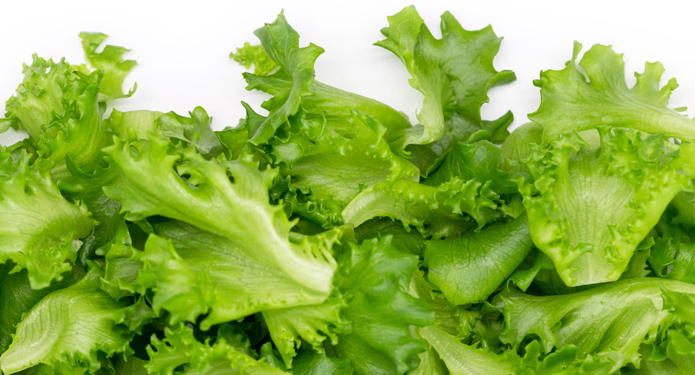
Fresh lettuce is crunchy, delicious, and full of flavor. When it gets soft and limp, the crispiness goes away, and the flavor begins to deteriorate. If you want your salads to taste as good as possible, and also deliver as many vitamins and nutrients as possible, then you’ll want to keep it as fresh as possible prior to eating. With proper storage techniques your produce can look like new for a long period, but if you don’t do it right, it may spoil in just a few days.
Keeping lettuce and other produce fresh in the refrigerator is essential for maintaining their flavor, texture, and nutritional value. Proper storage techniques can help extend the shelf life of fresh produce and minimize food waste. In this detailed article, we’ll explore various tips and strategies for keeping lettuce and other produce fresh when stored in the refrigerator.
Understanding Refrigerator Storage
The refrigerator is a vital tool for preserving the freshness of perishable foods, including lettuce and other produce. Refrigeration helps slow down the growth of bacteria, fungi, and other microorganisms that can cause food spoilage. However, not all produce items should be stored together in the refrigerator, as some emit ethylene gas, which can accelerate the ripening and spoilage of other fruits and vegetables.
Tips for Keeping Lettuce and Other Produce Fresh:
- Proper Temperature: Set your refrigerator temperature to around 40°F (4°C) to maintain optimal freshness for produce. Avoid overpacking the refrigerator, as overcrowding can restrict airflow and lead to uneven cooling.
- Moisture Control: Many types of lettuce and leafy greens thrive in a humid environment. To keep them fresh, store them in perforated plastic bags or produce storage containers lined with paper towels to absorb excess moisture while allowing airflow.
- Separate Ethylene-Sensitive Items: Some fruits and vegetables, such as apples, bananas, avocados, and tomatoes, produce ethylene gas, which can cause nearby produce to ripen and spoil more quickly. Keep ethylene-sensitive items away from lettuce and other leafy greens to prevent premature wilting and decay.
- Prep and Store Properly: Wash and thoroughly dry lettuce and other produce before storing them in the refrigerator. Remove any damaged or wilted leaves, and store them loosely rather than tightly packed to allow for air circulation.
- Use Crisper Drawers: Most refrigerators come equipped with crisper drawers designed to help maintain the freshness of fruits and vegetables. Store lettuce and other produce in these drawers to control humidity levels and prevent moisture loss.
- Wrap Greens in Damp Towels: For delicate greens like spinach and arugula, wrap them loosely in damp paper towels or kitchen towels before storing them in the refrigerator. The moisture from the towels helps keep the greens crisp and hydrated.
- Store Herbs Properly: Fresh herbs like parsley, cilantro, and basil should be treated like leafy greens and stored in a damp paper towel or placed in a jar of water in the refrigerator. Trim the stems and change the water regularly to prolong freshness.
- Avoid Freezing: While the refrigerator helps preserve the freshness of produce, freezing can cause irreversible damage to the texture and flavor of lettuce and other delicate greens. Keep produce away from the freezer compartment to prevent accidental freezing.
- Check and Rotate Regularly: Periodically check the condition of stored produce and remove any items that show signs of spoilage. Rotate items in the refrigerator to ensure that older produce is used first and fresher items are stored at the back.
- Use Produce Quickly: While proper storage techniques can help extend the shelf life of produce, it’s essential to use fresh fruits and vegetables promptly to prevent waste. Plan meals and recipes that incorporate fresh produce to ensure nothing goes to waste.
Keeping lettuce and other produce fresh in the refrigerator requires proper storage techniques and attention to detail. By maintaining the right temperature, controlling moisture levels, separating ethylene-sensitive items, and using proper storage containers, you can extend the shelf life of fresh produce and minimize food waste. Incorporate these tips into your refrigerator storage routine to enjoy crisp, flavorful lettuce and other produce for longer periods, ensuring that your meals are always fresh and delicious.
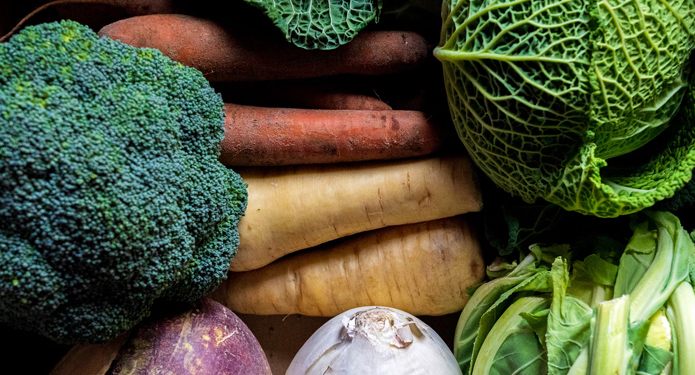
How Long Does Produce Usually Last?
The shelf life of produce can vary significantly depending on factors such as the type of produce, its ripeness when purchased, storage conditions, and handling practices. While some fruits and vegetables have a relatively long shelf life, others are more perishable and may spoil quickly if not stored properly. Here’s a general guideline for how long commonly consumed fruits and vegetables typically last when stored in the refrigerator:
- Leafy Greens (Lettuce, Spinach, Kale): 3-7 days
- Root Vegetables (Carrots, Potatoes, Beets): 1-2 weeks
- Broccoli and Cauliflower: 1 week
- Bell Peppers: 1-2 weeks
- Tomatoes: 1-2 weeks
- Berries (Strawberries, Blueberries, Raspberries): 3-7 days
- Citrus Fruits (Oranges, Lemons, Limes): 2-4 weeks
- Apples and Pears: 1-2 months
- Bananas: 1-2 weeks (if stored at room temperature)
- Grapes: 1-2 weeks
It’s important to note that these are general guidelines, and the actual shelf life of produce may vary based on individual factors. For example, pre-cut or pre-packaged fruits and vegetables may spoil more quickly than whole produce, and fresh herbs tend to have a shorter shelf life than sturdier vegetables. Additionally, the condition of the produce at the time of purchase, such as ripeness and freshness, can also impact its longevity.
To maximize the shelf life of produce, it’s essential to store it properly in the refrigerator, adhere to recommended storage guidelines, and check regularly for signs of spoilage such as wilting, mold, or off-odors. Using produce promptly and incorporating it into meals and recipes as soon as possible can also help minimize waste and ensure optimal freshness and flavor.
How Long Can You Extend Produce Freshness?
Proper care and storage techniques can significantly extend the life of produce, helping to preserve its freshness, flavor, and nutritional value. While the exact extension of shelf life may vary depending on the type of produce and other factors, such as storage conditions and handling practices, following proper care guidelines can help maximize the longevity of fruits and vegetables. Here’s how proper care can extend the life of produce:
- Optimal Temperature: Storing produce at the appropriate temperature can help slow down the rate of spoilage and extend its shelf life. Most fruits and vegetables benefit from refrigeration at temperatures between 32°F to 40°F (0°C to 4°C), which helps maintain freshness and prevents microbial growth.
- Controlled Humidity: Many types of produce, such as leafy greens and herbs, benefit from high humidity levels to prevent wilting and dehydration. Storing produce in crisper drawers or using produce storage containers with adjustable humidity settings can help maintain optimal moisture levels and extend shelf life.
- Proper Air Circulation: Adequate airflow is essential for preserving the freshness of produce and preventing the buildup of moisture and ethylene gas, which can accelerate ripening and spoilage. Avoid overcrowding produce in the refrigerator and use perforated bags or containers to allow for proper ventilation.
- Ethylene Management: Some fruits and vegetables produce ethylene gas, a natural plant hormone that can promote ripening and spoilage in nearby produce. To minimize ethylene exposure, store ethylene-sensitive items away from ethylene-producing fruits and vegetables, or use ethylene-absorbing products to absorb excess gas.
- Prevent Bruising and Damage: Handle produce with care to avoid bruising, cuts, or other physical damage, which can hasten spoilage and microbial growth. Use sturdy storage containers or bins to protect fragile items during transportation and storage.
- Preparation and Preservation: Properly washing, trimming, and preparing produce before storage can help extend its shelf life and maintain freshness. Remove any damaged or wilted portions, and store produce in a clean, dry condition to prevent contamination and mold growth.
- Regular Inspection and Rotation: Periodically check stored produce for signs of spoilage, such as mold, soft spots, or off-odors, and promptly remove any affected items to prevent cross-contamination. Rotate produce regularly to ensure that older items are used first and fresher items are stored properly.
- Use Produce Promptly: While proper storage techniques can help extend the life of produce, it’s essential to use fresh fruits and vegetables promptly to prevent waste. Incorporate produce into meals and recipes as soon as possible, and avoid overstocking or hoarding perishable items.
By following these proper care guidelines, you can extend the life of produce by several days to weeks, depending on the type of produce and storage conditions. Additionally, investing in quality storage containers, refrigerator organization systems, and ethylene-absorbing products can further enhance the effectiveness of produce preservation techniques, helping you minimize food waste and enjoy fresh, flavorful fruits and vegetables for longer periods.
Is There Stuff You Can Buy To Help?
Yes, there are several products available on the market designed to help extend the shelf life of produce and improve storage conditions. These products are specifically designed to address common challenges associated with storing fruits and vegetables, such as moisture control, ethylene management, and airflow. Here are some examples of products that can help extend the life of produce:
- Produce Storage Containers: These containers are designed to maintain optimal humidity levels and airflow to keep fruits and vegetables fresh longer. They often feature adjustable vents or perforations to regulate moisture and prevent condensation, which can lead to spoilage.
- Produce Bags: Perforated produce bags are made from breathable materials that allow air to circulate while preventing moisture buildup. These bags help keep produce fresh by reducing humidity and preventing the growth of mold and bacteria.
- Ethylene Absorbers: Ethylene-absorbing products, such as ethylene absorber packets or discs, help reduce the level of ethylene gas in the refrigerator or storage area. By absorbing excess ethylene, these products help slow down the ripening process and extend the shelf life of ethylene-sensitive fruits and vegetables.
- Fridge Organizers: Fridge organizers, including bins, drawers, and dividers, help maximize storage space in the refrigerator and keep produce organized. By creating designated storage areas for different types of produce, these organizers help prevent overcrowding and ensure proper airflow.
- Produce Wash: Produce wash solutions are specially formulated to remove dirt, pesticides, and bacteria from fruits and vegetables, helping to prolong their freshness and improve food safety. Some produce wash products also contain ingredients that inhibit microbial growth and reduce spoilage.
- Produce Saver Inserts: Produce saver inserts, such as green pads or discs, are placed in the crisper drawers or storage containers to absorb excess moisture and prevent produce from wilting or rotting. These inserts help maintain the crispness and freshness of leafy greens and other delicate produce items.
- Vacuum Sealers: Vacuum sealers remove air from storage bags or containers, creating an airtight seal that helps preserve the freshness of produce and prevent oxidation. Vacuum-sealed bags or containers can extend the shelf life of fruits and vegetables by reducing exposure to air and moisture.
- Reusable Storage Bags: Reusable silicone or fabric storage bags provide an eco-friendly alternative to single-use plastic bags for storing produce. These bags are durable, washable, and sealable, helping to keep fruits and vegetables fresh while reducing plastic waste.
By incorporating these products into your produce storage routine, you can enhance the effectiveness of proper storage techniques and prolong the freshness of fruits and vegetables. When choosing produce storage products, look for options that are BPA-free, dishwasher safe, and designed for the specific needs of the produce items you typically buy. Additionally, follow the manufacturer’s instructions for proper use and maintenance to ensure optimal performance and longevity of the products.
Are There DIY Techniques That Can Help?
Yes, there are several DIY techniques and hacks that can help extend the shelf life of produce and improve its freshness when stored in the refrigerator. These DIY methods are simple, cost-effective, and often utilize common household items to address various storage challenges. Here are some DIY techniques that can help keep produce fresh:
- Vinegar Wash: A solution of water and vinegar can help remove dirt, bacteria, and pesticide residues from fruits and vegetables, thereby extending their shelf life and improving food safety. Simply mix one part vinegar with three parts water in a spray bottle, spritz the produce, and rinse thoroughly before storing.
- Paper Towel Lining: Line the bottom of the crisper drawer or storage container with paper towels to absorb excess moisture and prevent produce from becoming soggy. Replace the paper towels regularly to maintain freshness and prevent mold growth.
- Ethylene Absorbers: Place ethylene-absorbing materials, such as activated charcoal, coffee grounds, or baking soda, in the refrigerator or storage area to help reduce the level of ethylene gas and slow down the ripening process of fruits and vegetables.
- DIY Produce Bags: Create breathable produce storage bags using cheesecloth or muslin fabric. Simply cut the fabric into squares or rectangles, sew the edges together to form a pouch, and use them to store fruits and vegetables in the refrigerator. These homemade bags allow for airflow while preventing moisture buildup.
- Herb Bouquets: Extend the freshness of herbs like parsley, cilantro, and basil by placing them in a glass of water, similar to a bouquet of flowers. Cover the herbs loosely with a plastic bag and store them in the refrigerator, changing the water every few days to keep them hydrated.
- DIY Produce Wash: Make a homemade produce wash using natural ingredients like lemon juice, baking soda, and salt. Mix these ingredients with water to create a solution that effectively cleans and sanitizes fruits and vegetables, helping to prolong their freshness and improve food safety.
- Vegetable Storage Hacks: Use various household items to store specific types of produce. For example, store root vegetables like potatoes and onions in a cool, dark pantry or in a mesh bag to promote airflow. Keep tomatoes at room temperature on the countertop away from direct sunlight to prevent them from losing flavor and texture.
- Citrus Peel Storage: After juicing lemons, limes, or oranges, save the citrus peels and place them in a jar of water in the refrigerator. The moisture from the citrus peels can help keep other fruits and vegetables, such as avocados and berries, fresh for longer.
- Freeze Produce for Later Use: Preserve the freshness of ripe or excess produce by freezing it for later use. Wash, chop, and blanch fruits and vegetables before freezing them in airtight containers or freezer bags. Frozen produce can be used in smoothies, soups, stir-fries, and other recipes.
- DIY Reusable Produce Bags: Create eco-friendly and reusable produce bags using lightweight fabric scraps or old T-shirts. Cut the fabric into rectangles, sew the edges together to form a pouch, and add a drawstring closure. These homemade produce bags are ideal for storing fruits and vegetables and reducing plastic waste.
By incorporating these DIY techniques into your produce storage routine, you can maximize the freshness and shelf life of fruits and vegetables while reducing food waste and saving money. Experiment with different methods to find the ones that work best for your produce and storage needs.
The Benefits Of Eating Fresh Produce
Eating fresh produce offers a multitude of health benefits, making it an essential component of a balanced and nutritious diet. Here are some of the key benefits of incorporating fresh fruits and vegetables into your daily meals:
- Nutrient-Rich: Fresh produce is packed with essential vitamins, minerals, antioxidants, and dietary fiber, all of which are vital for maintaining overall health and well-being. These nutrients support various bodily functions, including immune function, metabolism, digestion, and cellular repair.
- Disease Prevention: Consuming a diet rich in fruits and vegetables has been linked to a reduced risk of chronic diseases, including heart disease, stroke, certain cancers, diabetes, and obesity. The potent antioxidants found in fresh produce help neutralize harmful free radicals in the body and protect against oxidative stress and inflammation, which are underlying factors in many chronic conditions.
- Weight Management: Fresh produce is low in calories and high in water and fiber content, making it an excellent choice for weight management and appetite control. Eating plenty of fruits and vegetables can help you feel full and satisfied while providing essential nutrients and promoting healthy digestion.
- Digestive Health: The fiber found in fruits and vegetables supports digestive health by promoting regularity, preventing constipation, and supporting the growth of beneficial gut bacteria. Fiber-rich foods also help maintain optimal blood sugar levels and cholesterol levels, reducing the risk of digestive disorders and metabolic conditions.
- Hydration: Many fruits and vegetables have high water content, which helps keep the body hydrated and contributes to overall hydration levels. Staying adequately hydrated is essential for maintaining proper bodily functions, including temperature regulation, nutrient transport, and waste elimination.
- Improved Skin Health: Certain fruits and vegetables, such as berries, citrus fruits, carrots, and leafy greens, are rich in vitamins, antioxidants, and phytochemicals that promote healthy skin. These nutrients help protect the skin from damage caused by environmental factors, promote collagen production, and maintain a youthful appearance.
- Boosted Immunity: Fresh produce provides essential vitamins and minerals, such as vitamin C, vitamin A, and zinc, which are crucial for a robust immune system. Consuming a variety of fruits and vegetables can help strengthen the immune response, reduce the risk of infections, and support overall immune function.
- Heart Health: A diet rich in fruits and vegetables is associated with a lower risk of cardiovascular disease and stroke. The fiber, potassium, antioxidants, and phytochemicals found in fresh produce help lower blood pressure, improve cholesterol levels, reduce inflammation, and protect against plaque buildup in the arteries.
- Mental Well-Being: Research suggests that consuming a diet high in fruits and vegetables may have positive effects on mental health and cognitive function. The nutrients and antioxidants found in fresh produce help protect brain cells from damage, support neurotransmitter function, and promote overall brain health.
- Longevity: Studies have consistently shown that individuals who consume higher amounts of fruits and vegetables tend to live longer and have a lower risk of premature death. The health-promoting compounds found in fresh produce contribute to longevity by reducing the risk of chronic diseases and supporting overall health and vitality.
Overall, incorporating a variety of fresh fruits and vegetables into your diet is essential for promoting optimal health, supporting disease prevention, and enhancing overall well-being. Aim to include a colorful array of produce in your meals and snacks to reap the numerous health benefits that fresh produce has to offer.
2 Easy Ways To Keep Produce Fresh Longer
If you’re going to buy something to preserve and maintain produce, you may as well get something good. With such a wide range of produce storage options, it can be tough to choose the one that will be the best. There are many good options that we don’t carry, but we can guarantee via thorough testing and years of customer feedback, that the two options below will be guaranteed to keep lettuce and other produce fresh for longer periods. If you want to eliminate the guess work and just get one affordable product to help with produce storage, then either of the two products below would be a good choice.
You can, of course, find similar stuff sold elsewhere, but when you get stuff from us, you can be sure that the quality is high, and the price is low. We don’t have everything, but everything we have is good.

Microfiber Produce Storage Bag
The Microfiber Salad Bag, available at SimplyGoodStuff.com, is an innovative storage solution designed to help keep lettuce and other produce fresh for extended periods. This product offers several features and benefits that contribute to its effectiveness in preserving the quality and freshness of fruits and vegetables:
Microfiber Material
The salad bag is made from high-quality microfiber material, known for its exceptional absorbency and durability. Microfiber fabric is soft, lightweight, and non-abrasive, making it ideal for storing delicate produce without causing damage or bruising.
Moisture Absorption
Microfiber has excellent moisture-wicking properties, allowing it to absorb excess moisture from fruits and vegetables while maintaining optimal humidity levels. By reducing moisture buildup, the salad bag helps prevent wilting, mold growth, and bacterial contamination, keeping produce fresh and crisp for longer periods.
Breathable Design
The salad bag features a breathable design that allows air to circulate freely around the stored produce. Proper airflow helps regulate temperature and humidity levels inside the bag, preventing condensation and maintaining freshness without suffocating the produce.
Convenient Drawstring Closure
The bags feature a convenient drawstring closure that allows for easy opening and closing, as well as secure sealing. The drawstring closure helps keep produce contained and prevents air from entering the bag, further extending the shelf life of stored produce.
Large Capacity
The spacious interior of the salad bag provides ample room for storing multiple heads of lettuce, leafy greens, herbs, and other produce items. The generous capacity allows you to store large quantities of produce without overcrowding, ensuring proper airflow and preventing premature spoilage.
Versatile Use
In addition to storing lettuce and other produce, the salad bag can also be used to store and transport a variety of other food items, including fruits, vegetables, herbs, and baked goods. Its versatility makes it a practical and multipurpose storage solution for the kitchen and pantry.
Reusable and Washable
The salad bag is reusable and washable, allowing for easy maintenance and long-term use. Simply machine wash the bag with mild detergent and water, then air dry or tumble dry on low heat. Regular cleaning helps remove dirt, stains, and bacteria, ensuring hygienic storage for your produce.
Compact and Portable
The lightweight and compact design of the salad bag make it ideal for use at home, in the refrigerator, or on the go. Whether you’re storing produce in the kitchen, packing a picnic, or traveling with snacks, the salad bag offers convenient storage and transport options.
Environmentally Friendly
The salad bag is an eco-friendly alternative to disposable plastic bags and containers, helping reduce waste and promote sustainability. By opting for reusable storage solutions like the salad bag, you can minimize your environmental impact and support greener living practices.
Overall, the Microfiber Salad Bag from SimplyGoodStuff.com offers a practical and effective way to store lettuce and other produce, keeping them fresh, crisp, and flavorful for extended periods. With its moisture-absorbing properties, breathable design, and reusable construction, the salad bag provides a convenient and eco-friendly storage solution for preserving the quality and longevity of your favorite fruits and vegetables.
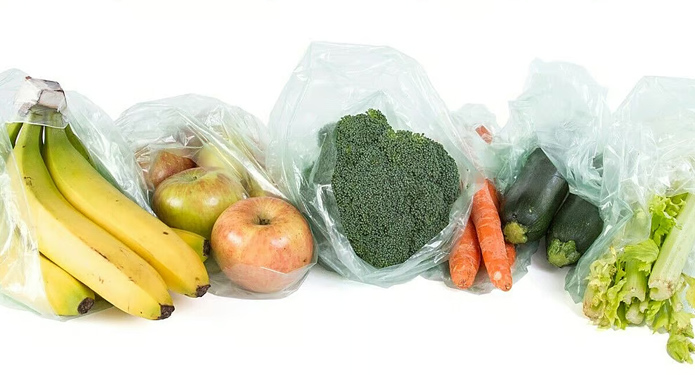
Keep It Fresh Produce Bags
The Keep it Fresh Produce Bags, available at SimplyGoodStuff.com, are an excellent storage solution designed to help keep lettuce and other produce fresh for extended periods. These innovative produce bags offer several features and benefits that contribute to their effectiveness in preserving the quality and freshness of fruits and vegetables:
Breathable Mesh Material
The produce bags are made from durable and breathable mesh material, which allows for optimal airflow around the stored produce. Proper airflow helps regulate temperature and humidity levels inside the bag, preventing moisture buildup and reducing the risk of mold and bacterial growth.
Ethylene-Blocking Technology
The Keep it Fresh Produce Bags feature ethylene-blocking technology, which helps slow down the ripening process of fruits and vegetables. Ethylene is a natural plant hormone that promotes ripening and can accelerate the spoilage of produce. By blocking ethylene gas, the bags help extend the shelf life of stored produce and maintain its freshness for longer periods.
Multi-Layer Design
The produce bags feature a multi-layer design that provides added protection and insulation for the stored produce. The outer mesh layer allows for airflow, while the inner lining helps retain moisture and prevent dehydration. This multi-layer construction helps create an optimal storage environment for a wide range of fruits and vegetables.
Reusable and Washable
The Keep it Fresh Produce Bags are reusable and washable, allowing for easy maintenance and long-term use. Simply machine wash the bags with mild detergent and water, then air dry or tumble dry on low heat. Regular cleaning helps remove dirt, stains, and bacteria, ensuring hygienic storage for your produce.
Transparent Design
The transparent mesh material allows you to easily see the contents of the bags without having to open them. This visibility helps you quickly identify the types of produce stored in each bag and monitor their freshness levels.
Environmentally Friendly
The Keep it Fresh Produce Bags are an eco-friendly alternative to disposable plastic bags and containers. By opting for reusable storage solutions like these bags, you can reduce waste and promote sustainability in your kitchen and household.
Overall, the Keep it Fresh Produce Bags offer a practical and effective way to store lettuce and other produce, keeping them fresh, crisp, and flavorful for longer periods. With their breathable mesh material, ethylene-blocking technology, reusable design, and convenient features, these bags provide a versatile and eco-friendly storage solution for preserving the quality and longevity of your favorite fruits and vegetables.
Have a better way to keep lettuce and other produce fresh? Use the comments box to share with everyone else.


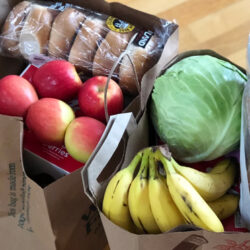

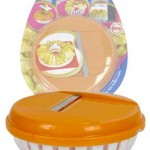
 Ordering Info
Ordering Info Customer Service
Customer Service Follow Us
Follow Us Search For Stuff
Search For Stuff Find Us
Find Us Call Us
Call Us Pay Us
Pay Us

0 Comments so far.
Use the form below to add your own thoughts or questions. Scroll down to read what other people had to say.